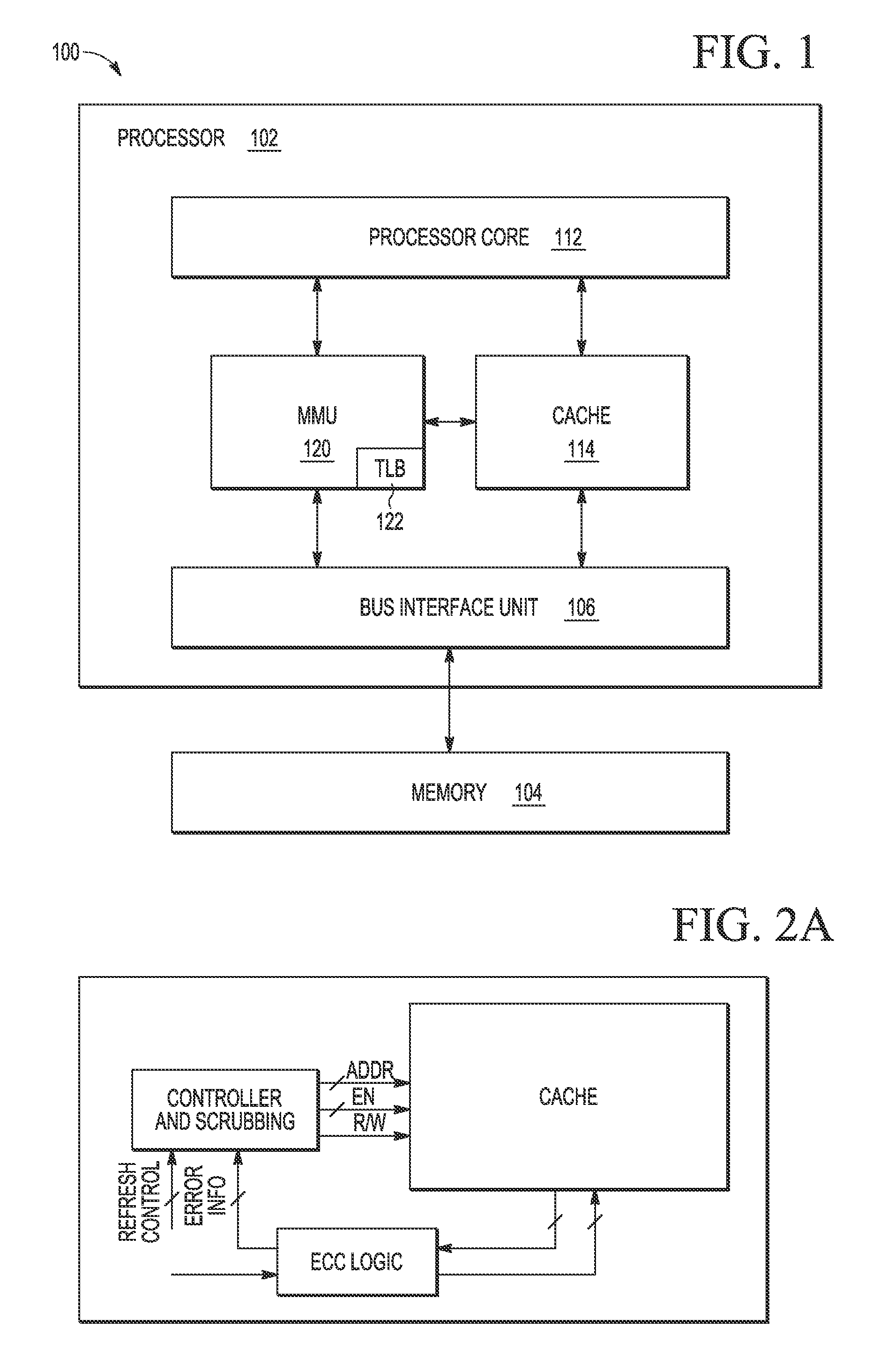Data type dependent memory scrubbing
a data type and memory technology, applied in the field of improving the error resilience of memories, can solve the problem that bit cells are often more sensitive to soft error rates
- Summary
- Abstract
- Description
- Claims
- Application Information
AI Technical Summary
Benefits of technology
Problems solved by technology
Method used
Image
Examples
Embodiment Construction
[0015]In general the present invention relates to a method for controlling a memory scrubbing rate based on content of the status bit of a tag array of a cache memory. More specifically, in certain embodiments, the tag array of a cache memory is scrubbed at smaller interval than the scrubbing rate of the storage (data) arrays of the cache. This increased scrubbing rate is in appreciation for the importance of maintaining integrity of tag data. Based on the content of the status bit of the tag array which indicates modified, the corresponding data entry in the cache storage array is scrubbed accordingly. If the modified bit is set, then the entry in the storage array is scrubbed after processing the tag entry. If the modified bit is not set, then the data storage array is scrubbed at a predetermined scrubbing interval which is less frequent than the scrubbing rate of the tag array.
[0016]Referring to FIG. 1, a block diagram of a data processing system 100 is shown. The data processing...
PUM
 Login to View More
Login to View More Abstract
Description
Claims
Application Information
 Login to View More
Login to View More - R&D
- Intellectual Property
- Life Sciences
- Materials
- Tech Scout
- Unparalleled Data Quality
- Higher Quality Content
- 60% Fewer Hallucinations
Browse by: Latest US Patents, China's latest patents, Technical Efficacy Thesaurus, Application Domain, Technology Topic, Popular Technical Reports.
© 2025 PatSnap. All rights reserved.Legal|Privacy policy|Modern Slavery Act Transparency Statement|Sitemap|About US| Contact US: help@patsnap.com



